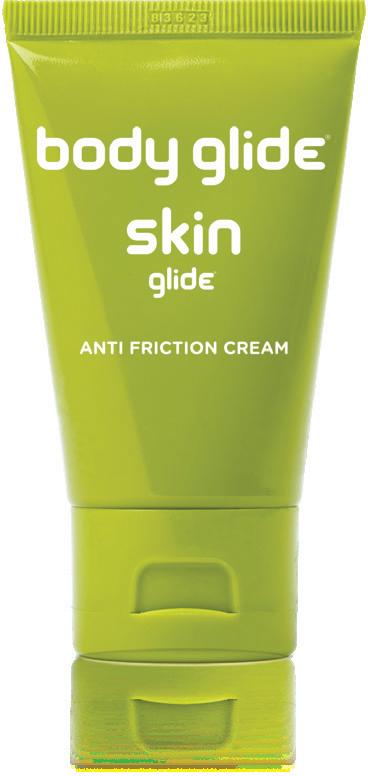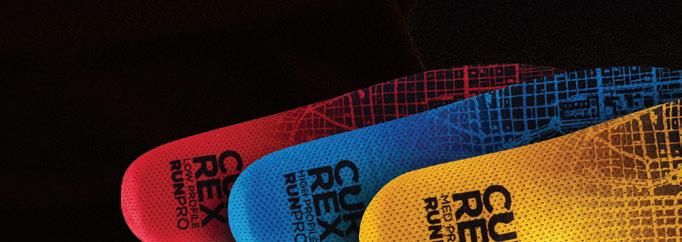
4 minute read
ESSENTIAL SELLING
Sell the category by NOT selling the category. Believe it, this works at run specialty. /
By Tom Griffen
Positive customer comments are predictable and quite uniform across the industry — folks love their local store, they happily praise their favorite employees, they even use powerful words like inspire and motivate and life-changing. Gushing customers keep fuel in your tank. They remind why you got into, and stay, in this business.
But your customers’ less positive remarks are equally consistent, too. Their reverberating commentary, however, suggests that you may not be listening to it. Not very well, anyhow.
Critique of the specialty run experience regularly alludes to one main thing — customers had to come back too many times to get everything they’d have gladly purchased today. But they left happy! You high-fived! They said they had everything they needed! So where was the miss?
There are many factors that may have led to this predicament. Like, maybe items were not suggested because an employee was worried about the growing queue. Or maybe questions were not answered, or even addressed, because the customer’s ticket was already extra big. Or maybe your team member simply didn’t know what to suggest.









And worse still, maybe they just didn’t care to take the time.
This undesirable scenario could play out in countless ways. But the specific reason why the customer had to come back is not the problem. It is merely a symptom of something bigger.
Fact is, your customer had to make another trip to your store when they’d have preferred not to. They should have been given an informed chance to decide whether or not a thing should go home with them. But somehow this didn’t happen.
Offering a Complete Experience
Customers having to make an extra trip to your store under these circumstances is a major liability. Yet it occurs all the time and has been happening since day one. This is troubling, and speaks to something you may not want to hear — You think your team is offering a complete and thorough experience, but it may not be as amazing as you hope. Sorry to burst that bubble.
Which leads to one big question: How can you save customers a trip?
First of all, the answer has little to do with product, and lots to do with people. In order to get fitters thinking smartly about essentials, you have to relentlessly remind your team what they’re here to do in the first place — to truly outfit customers.
And make no mistake, an outfitter is much different that a fitter. Outfitters, for example, would never forget to discuss the merits of a spoon with a soup customer. Not because they want to sell the spoon, but because they want the customer to understand the reasoning behind a spoon.
Similarly, they shouldn’t send that new half-marathon customer out the door without info about socks, a sports bra, some anti-chafe stuff, nutritional tips, apparel tech, training guidelines, a pre- and post-workout regimen, a flyer describing your weekly group runs ... and so much more.
Whether or not the customer buys any of this stuff is beside the point. Because the goal in specialty is not to sell. Sure, you want big numbers and you ought to make your goals transparent. But keep in mind that store sales are most effective, sustainable and healthy when transacted with education top-of-mind.
People will buy more when they are taught about a thing — rather than sold a thing. So it stands to reason that you ought to be preaching this educational approach to your team on a regular basis, rather than expect ratios and sales metrics to be sufficient motivators.
Non-Stop Training Is Essential
In addition to keeping the big educational picture front and center, it’s also imperative that non-stop training follows suit. Even the most educationallydriven employee will miss easy opportunities if they aren’t adept at discussing everything on your walls. A few talking points are generally enough, but you (or someone) needs to make sure they have such tools readily available.
Here’s an activity to try: When you have a few minutes to spare, grab a random item from the shelves and ask these three questions:
1. What is this item?
2. What is this item meant to do?
3. What sort of customer would benefit from hearing about this item?
Then, as a bonus, ask your team to name a few other products this same customer might also enjoy. Start building the muscle that appropriately connects one essential to many others. Make your UPTs make relevant sense.
Occupying an Important Space
If you want to turn your essentials inventory more often than you dust it, it’ll need to occupy a larger space of importance in your outfitters’ minds. Items will need to carry more weight beyond a mere add-on sale. They’ll need to be upheld by a genuine belief that they make a difference in the customer’s activity. This can only happen if you create a dedicated team of staff educators who offer useful and pertinent information to each and every unique customer.
If you spend the day teaching your staffers, they will mirror this with their customers. And the beautiful irony is that when they educate customers all day long (rather than “sell”), their sales numbers will skyrocket. Not to mention the increased collective confidence, credibility and camaraderie. And gosh, who doesn’t want that?
They’re called essentials for a reason. Teach ... teach ... teach so they may live up to their name. n
Anita Fraser 3:23 Marathoner Medium Arch Profile
NO COWBELLS. NO CROWDS. NO FINISH LINE. JUST SOUL
Inner drive. It keeps you going when all that’s ahead is an endless stretch of asphalt. Enter Currex insoles. Highly customized and available in three arch profiles, they’re clinically proven to help prevent injury, enhance performance, and provide comfort. But most importantly, they’re engineered to keep you running. Learn more at currex.us















